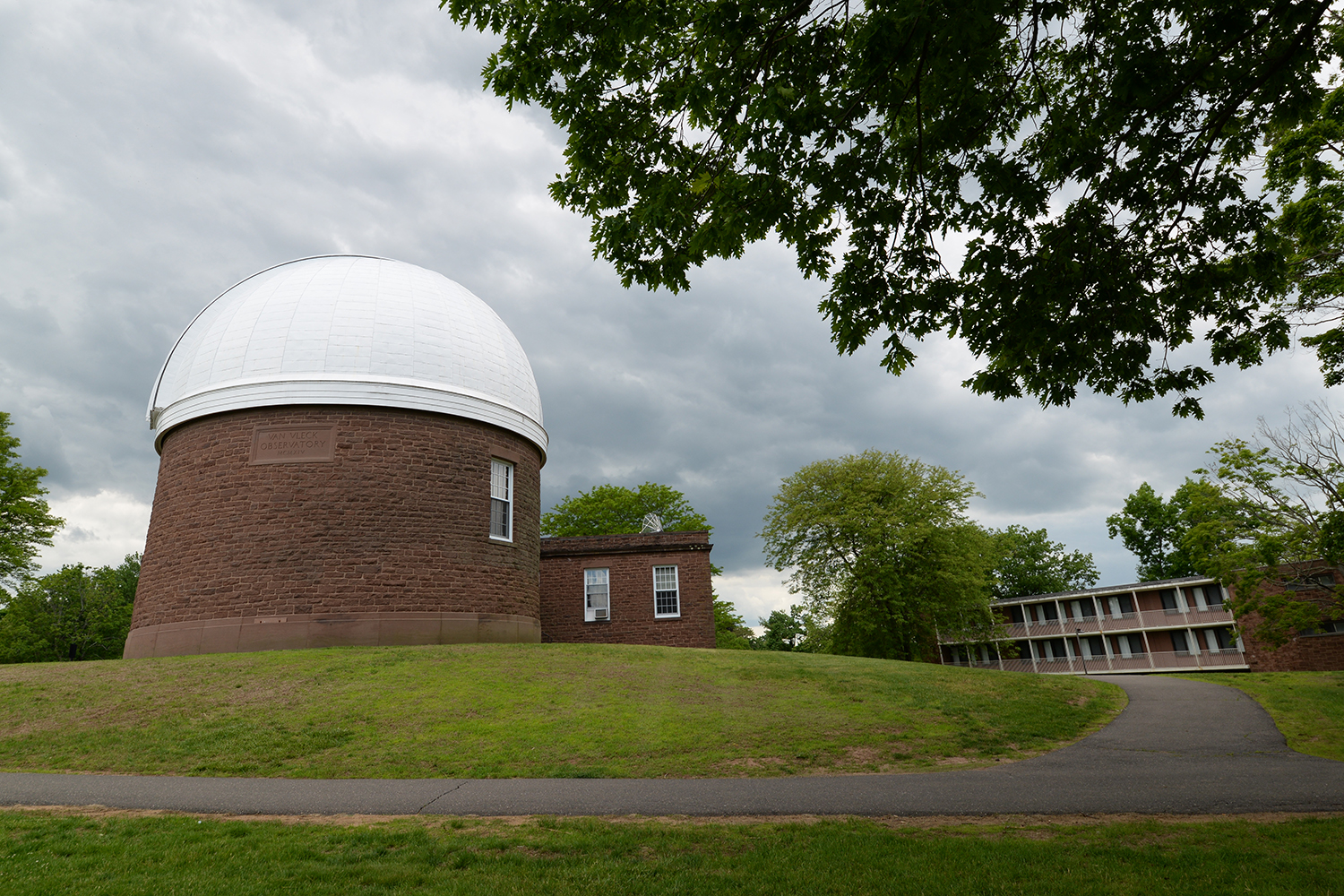Courant Explores History of Astronomy at Wesleyan Ahead of Centennial Celebration
 Ahead of the centennial celebration of Wesleyan’s Van Vleck Observatory, The Hartford Courant explored a bit of observatory history, including some recent discoveries of rare artifacts.
Ahead of the centennial celebration of Wesleyan’s Van Vleck Observatory, The Hartford Courant explored a bit of observatory history, including some recent discoveries of rare artifacts.
A team of Wesleyan professors and students, together with the Astronomical Society of Greater Hartford, is preparing for an exhibit this spring, “Under Connecticut Skies: Exploring 100 Years of Astronomy at Van Vleck Observatory in Middletown, Connecticut.”
“We’ve been looking into every nook and cranny to see what we have here,” Associate Professor of History Paul Erickson told the Courant. One exciting find: a rare early mechanical model of the solar system, long believed to be lost, known as “Russell’s Stupendous and Magnificent Planetarium or Columbian Orrery.” Back in the 1830s, the device traveled the country in a wagon to be exhibited to big crowds.
According to the story:
Some of the other finds include an early 18th century French refractor telescope and a late 19th century mechanical calculating machine known as “the Millionaire.” The Swiss-made machine was employed in the principal research of the observatory, attempting to calculate stellar distances. “Astronomy involves a lot of number crunching, so this was a very useful tool before the computer,” Erickson said.
Of particular interest is the observatory guestbook, which records the visits of world-famous astronomers, such as Harlow Shapley, the first scientist to correctly estimate the size of the Milky Way, and Edwin Powell Hubble, for whom the Hubble Telescope is named. There is also a visit in the 1920s of a young Subrahmanyan Chandrasekhar, the Indian-born astrophysicist who went on to win the Nobel Prize.
Read more about a project to restore the Van Vleck Refractor telescope here. The project is set to wrap up this summer.

